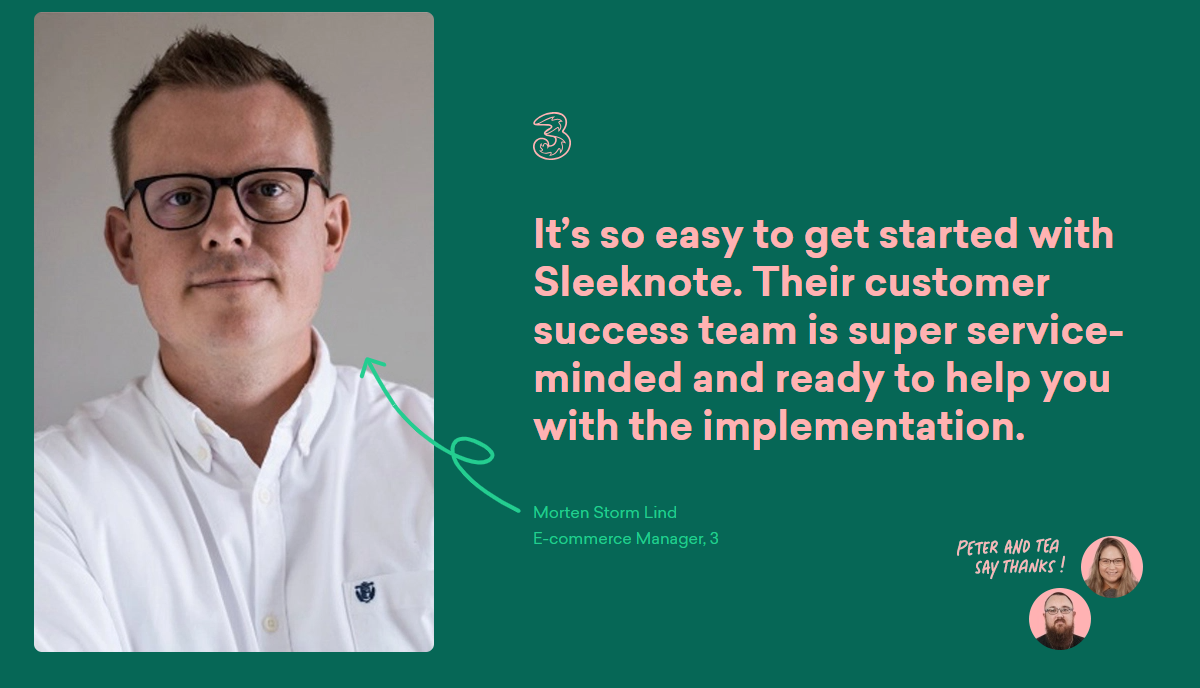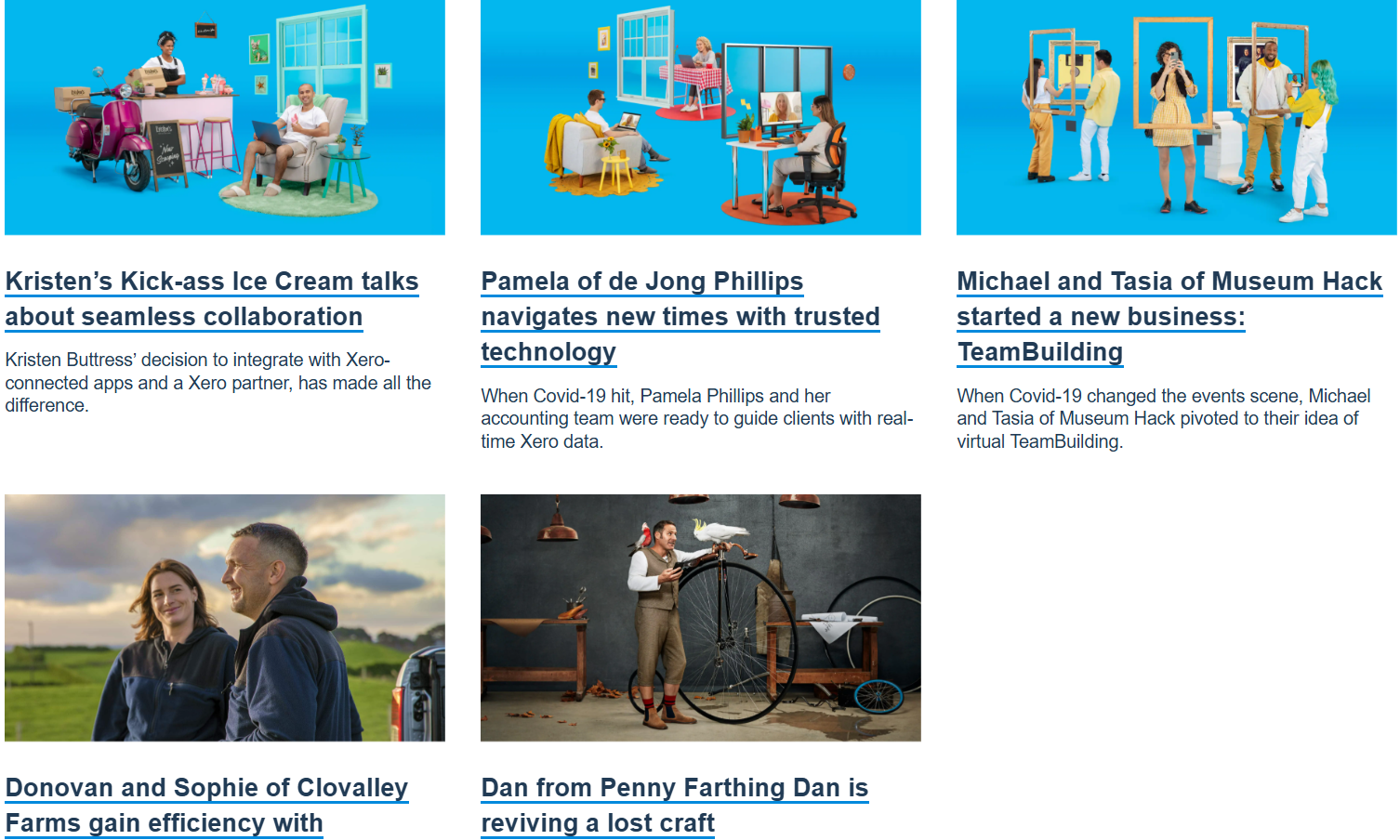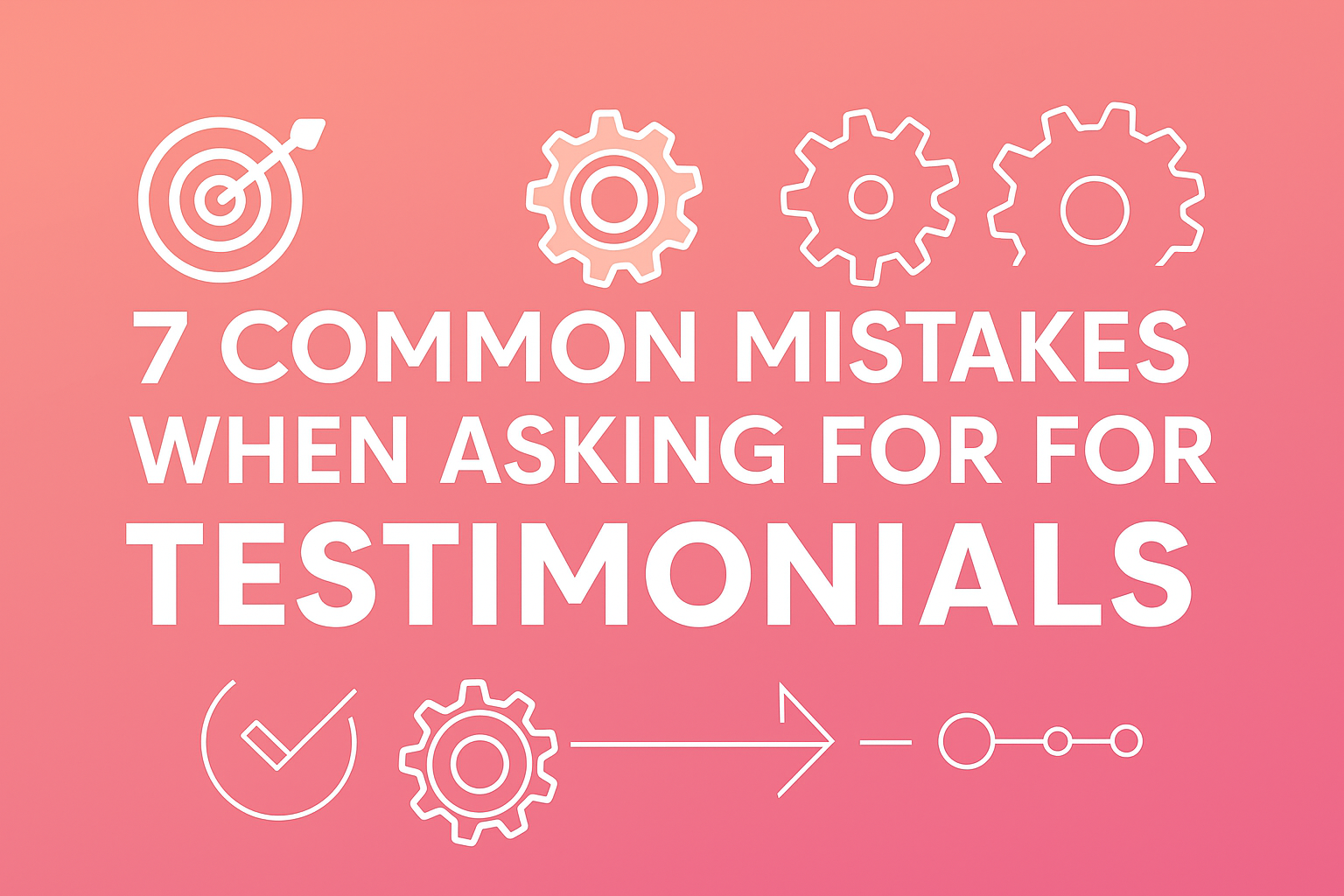Table of contents
Marketing teams know that authentic customer testimonials can dramatically boost trust and sales. However, many businesses make mistakes when soliciting these endorsements.
Businesses often make mistakes when asking for testimonials by timing requests poorly or wording them badly, leading to low response rates and bland quotes.
Good testimonials can be the difference between a casual browser and a committed buyer, because of the natural trust they generate among readers/users.
In this article, we’ll show the top testimonial request mistakes companies make when asking for testimonials. We will also discuss how you can fix them, so you can collect customer feedback and social proof that converts.
Mistake #1: Not Asking at the Right Time
Timing is critical. Think of it like picking a fruit: if you pluck it too early, it hasn't ripened; wait too long, and it starts to spoil. The same goes for testimonials.
If you ask immediately after purchase, your customer might not have tasted the "fruit" of your product or service yet, meaning they haven't seen the results. Wait too long, and their enthusiasm fades, the memory dims, or worse, their inbox has swallowed your request.
One study cited by Commerce Canal found that without prompting, review-posting rates drop quickly over time (about 12% the day after purchase, falling to 1% by two weeks later).
In short, there is a narrow sweet spot. Wait until after customers have achieved results or finished onboarding, but don’t delay so long that they forget.
- Ask after success: Wait until a customer clearly benefits (e.g. they had a successful delivery, resolved a pain point, or completed onboarding). At this moment of peak satisfaction, they’ll be more enthusiastic. A marketing example email even references the client’s success and thanks them before the request.
- Give space, not forever: Allow enough time to see value. A rushed request (or too many reminders) can annoy them. Studies suggest that asking roughly a week or more after a completed experience (rather than the next day) yields better review rates.
- Express gratitude and reciprocity: When you ask, be sure to thank the customer first. This taps the reciprocity principle: if you give them something (praise, an incentive, or a sincere thank you), they feel inclined to return the favour with a testimonial.
It could be as simple as offering a small gift card or discount as a token of thanks. That encourages many customers to respond.
By striking at the right moment, after the service or purchase has been completed, you respect the customer’s schedule and maximize their willingness to help.
Mistake #2: Making It Complicated for Customers
Forms that are too long or confusing kill completion.
Every extra field or unclear step increases friction, so many people abandon the request. According to Feathery , 27% of users abandon forms simply because they are too long. (Other top reasons include privacy/security concerns or irrelevant questions.)
- Keep it minimal: Only ask for essential information. If you just want a quote or video, just provide a simple prompt and name/email fields. Don’t force customers through a multi-page survey before they can leave feedback.
- Break it into steps: If you need more details, consider a step-by-step approach (for example, first ask if they’d provide a testimonial, then follow up with a short survey or interview). One-question-at-a-time formats (like single-question popups or wizards) have far higher completion rates than bulky multi-field forms.
- Use clear instructions: Any ambiguity will stall users. Provide concise guidance on how to submit (for example, “click here to record a 1-minute video” or “type a few sentences”). Remove any unnecessary checkboxes or legal jargon.
By reducing friction and making the process easy, you dramatically increase response rates. Essentially, you want to reduce the customer's resistance as much as possible.
Tip: Automated platforms (like Testimonial Donut) can send well-designed, minimal forms to help customers complete testimonials. Testimonial Donut has a really simple and intuitive testimonial recording process that works smoothly on all devices, and easily lets your customer record their reviews, so you can share them or add them as embeds on your website or marketing materials.
Try Testimonial Donut! It’s free, and the setup is so easy, you can do it in your coffee break.
Mistake #3: Being Too Generic in the Request
Our memories are highly context-dependent, meaning we recall information better when given specific prompts or cues.
When you ask someone a general question like, “Can you give us a testimonial?”, their brain has to search a vast database of experiences with your product and without guidance, that search often turns up blank or leads to vague, generic responses like “It was great!”
But when you ask a focused question like, “What specific problem did we solve for you?” or “What outcome did you achieve using our service?”, you activate retrieval cues.
These cues act as mental triggers, helping the customer tap into detailed memories and emotional reactions. This results in richer, more authentic feedback.
Additionally, choice paralysis (also known as decision fatigue) can discourage responses. A broad question offers too many possible angles, which feels mentally taxing. Narrowing it down reduces cognitive load, making it easier and more likely for people to respond.
- Ask pointed questions: Frame your request around their experience.
- Use guided elaboration: When you prompt someone with structure, they naturally elaborate more and stay on topic. A focused question like “What was the key result you achieved?” will elicit specific numbers or outcomes.
- Be conversational: When possible, conduct a brief interview (by phone or in person). Ask open-ended questions in a friendly tone. For example, start with: “Tell me about the problem that led you to try us,” then follow up: “That’s great, what happened next?” Drawing the story out often produces a much richer testimonial.

Example of a concise, clear “mini-testimonial,” which is easier for readers to digest and for marketers to highlight. Moreover, it highlights a specific relevant quality of the product.
If you’re still wondering how to ask for testimonials, our guide on questions to ask while requesting testimonials could help you.
Mistake #4: Only Asking for Positive Testimonials
If you request feedback only from your happiest customers or steer them to omit any downsides, the testimonials will feel biased or manufactured. Modern consumers value authenticity above all. Balanced feedback tends to build more credibility. If all your testimonials appear flawless and identical, savvy prospects might doubt their authenticity.
- Be transparent: One or two minor constructive comments alongside praise make your testimonials more believable. People expect that every product has small flaws, so seeing some negative points makes the positive comments more trustworthy. A Trustpilot study found that including a few negative reviews alongside positives can boost conversion rates by 14%, because it proves you’re not editing out real feedback.
- Show the full story: Use testimonials that acknowledge initial concerns. For example, “I was worried about [common concern], but [what happened]…” This reassures readers that you understood typical fears and overcame them.
- Rotate diverse voices: Share testimonials from customers in different industries, sizes, and backgrounds. Even if each testimonial is positive overall, showing a variety of voices (engineers, marketers, small businesses, etc.) signals that you’re presenting all kinds of satisfied customers, not just cherry-picked ones.
Mistake #5: Not Offering Multiple Formats
Customers give feedback in different ways. Some people love recording video testimonials, others prefer simply writing a quote or sending a short voice note, and some might even share a social media shout-out. By giving options, you remove barriers.
Limiting customers to one format severely cuts the number who will respond.
- Offer choices: In your request, explicitly mention multiple options. For example: “Feel free to write a short testimonial, record a 1-minute video, or even post on our Facebook page, whatever’s easiest for you.”
- Use multimedia: Encouraging video is especially powerful. Video testimonials are more engaging and emotionally persuasive. Remember, people retain about 65% of information when they hear and see it, vs. just 10% when hearing alone. But not everyone is comfortable on camera, so always provide alternatives.
- Leverage social platforms (Facebook, LinkedIn, or Google): Provide links or instructions for all possible channels. For instance, an email could say: “If you’re on LinkedIn, feel free to post a quick recommendation, and just mention us or let us know!”
Mistake #6: Forgetting to Follow Up
Even when a customer initially agrees, they might intend to write something “later” but get busy and forget.
Failing to send a polite reminder is a missed opportunity.
- Set a reminder schedule: If you haven’t received the testimonial within 3–5 days, send a short follow-up note. Be polite and appreciative: e.g. “Just checking in, no rush! We’d still love to publish your feedback when you have a moment.” Often, this gentle nudge doubles the response rate.
Multiple reminders (spaced out by a week or so) can work even better. The second follow-up can dramatically increase replies. - Automate the process: Use tools that automatically resend requests to non-responders.
- Add personal touches: If email isn’t working, try a quick text or a phone call. Even a brief call saying, “I’m excited to feature your story is now a good time?” can jog memory and yield a quote on the spot.
Remember: No one minds a gentle reminder, especially if you frame it as helping you share their success story.
When you do follow up, restate the value for them (“Your insight could help other businesses”) and reiterate ease (“It only takes a minute to reply”).
Mistake #7: Not Utilizing Testimonials Properly
Collecting customer feedback is only half the battle; failing to use it effectively is equally damaging. This is one of the easiest mistakes when asking for a testimonial. if you bury testimonials on an obscure page or forget to share them, you’re wasting a powerful sales asset.
- Website integration: Place testimonials on high-traffic pages – your homepage, product or service pages, pricing page, etc.

- Social proof in marketing: Share testimonials on your social channels and email newsletters. A short video clip on Instagram or a quote card on LinkedIn can draw new interest.
Including a customer quote in an ad or landing page copy harnesses this social proof effect that makes people think, “if others are happy, I’ll be happy too.”

- Sales and proposals: Provide sales teams with relevant testimonials (by industry or use case) to include in proposals and demos.
- Leverage customer success: Align your testimonial strategy with customer success efforts. This also may inspire them to give more detailed feedback.
If you ignore these testimonials once collected, you miss out on one of marketing’s most cost-effective tools, as integrating testimonials properly can measurably lift conversions.
Smart use of social proof on landing pages and CTAs also improves results. Consider also A/B testing different testimonial placements and formats to see what resonates best. (For detailed conversion tactics using testimonials, see our strategies to improve website conversion rate.)
Final Thoughts
Testimonials can be a business’s best marketing weapon or a wasted opportunity if mishandled. So, choose the right moment, keep it simple, be specific, welcome honesty, offer multiple formats, follow up persistently, and use every testimonial effectively.
Remember the evidence: 92% of consumers trust word-of-mouth and recommendations (like testimonials) above all else.
Implementing these best practices will improve how you collect customer testimonials.
Need help getting started? Try Testimonial Donut – our free, no-credit-card-required platform lets you automate requests and showcase reviews easily. With Testimonial Donut, you can manage all your testimonials in one place and never miss another opportunity to share a customer success story.



